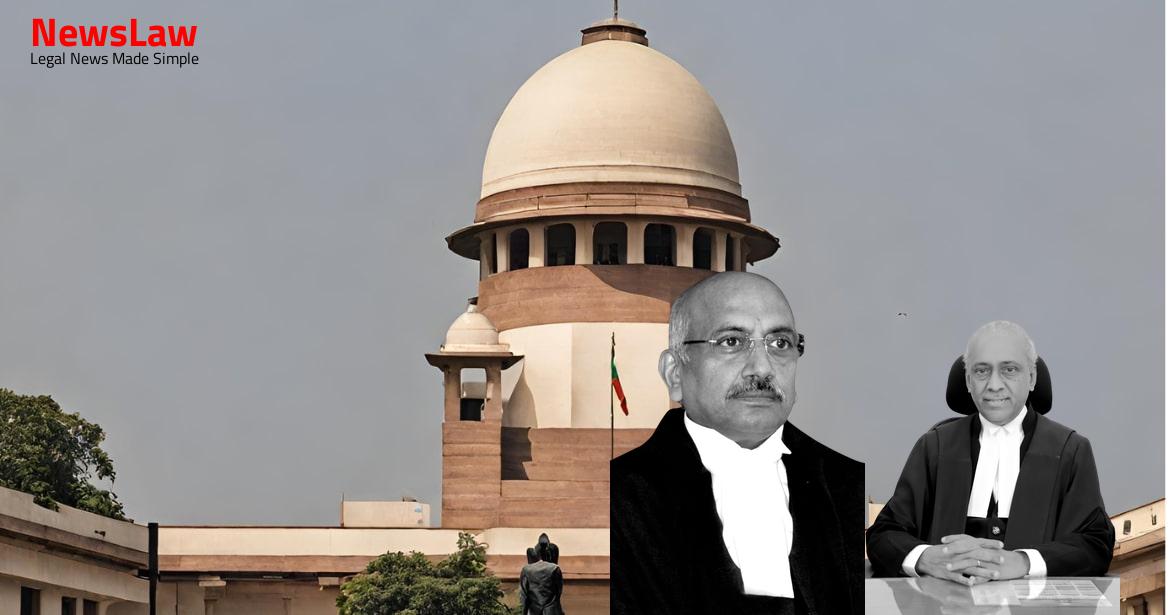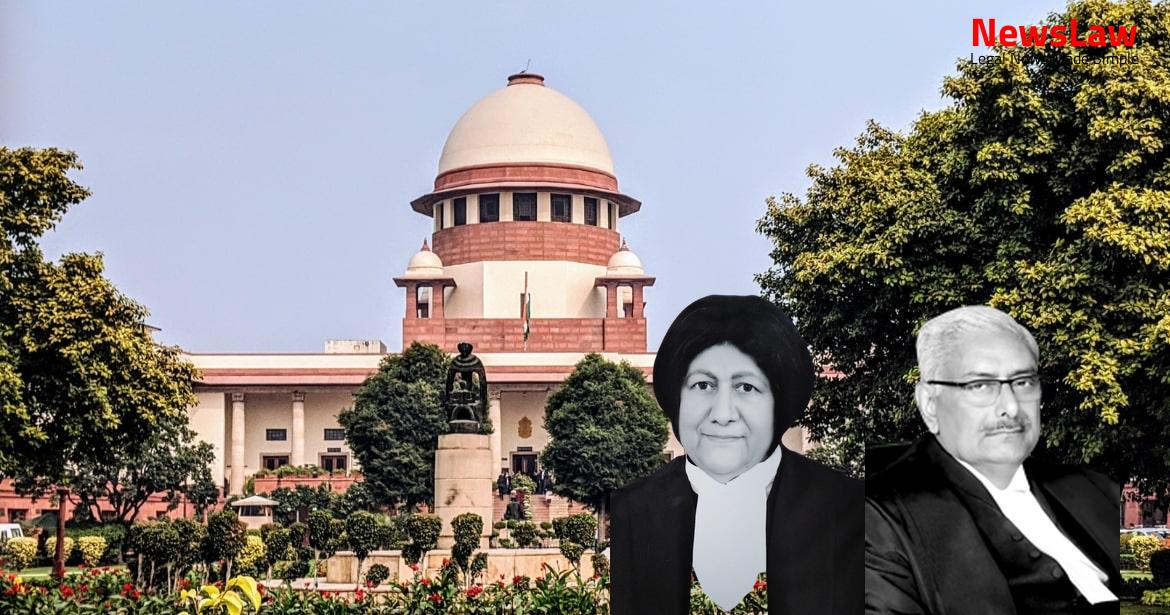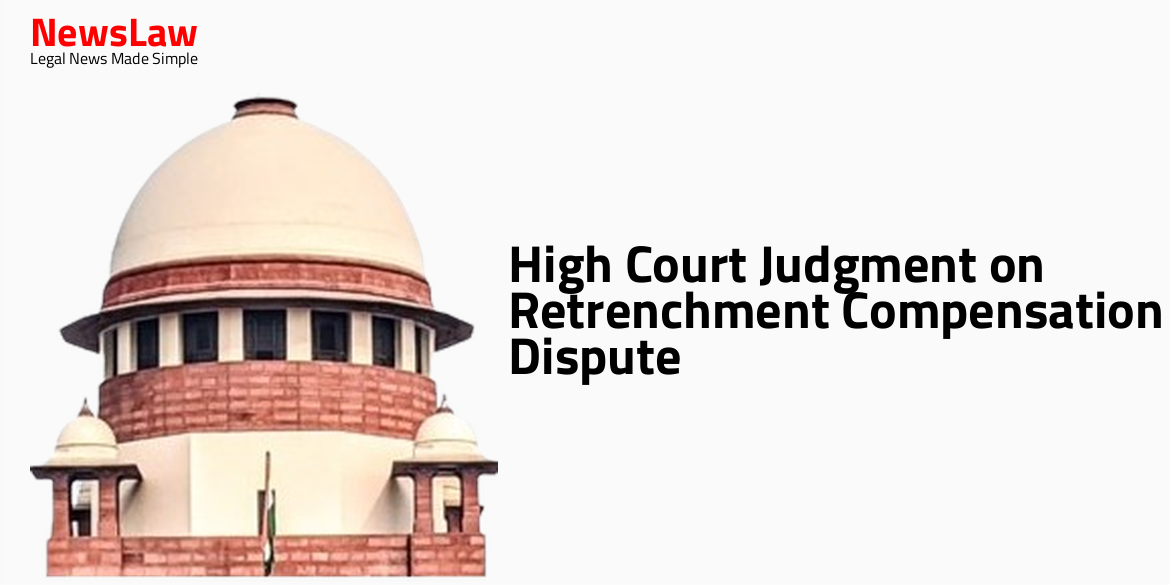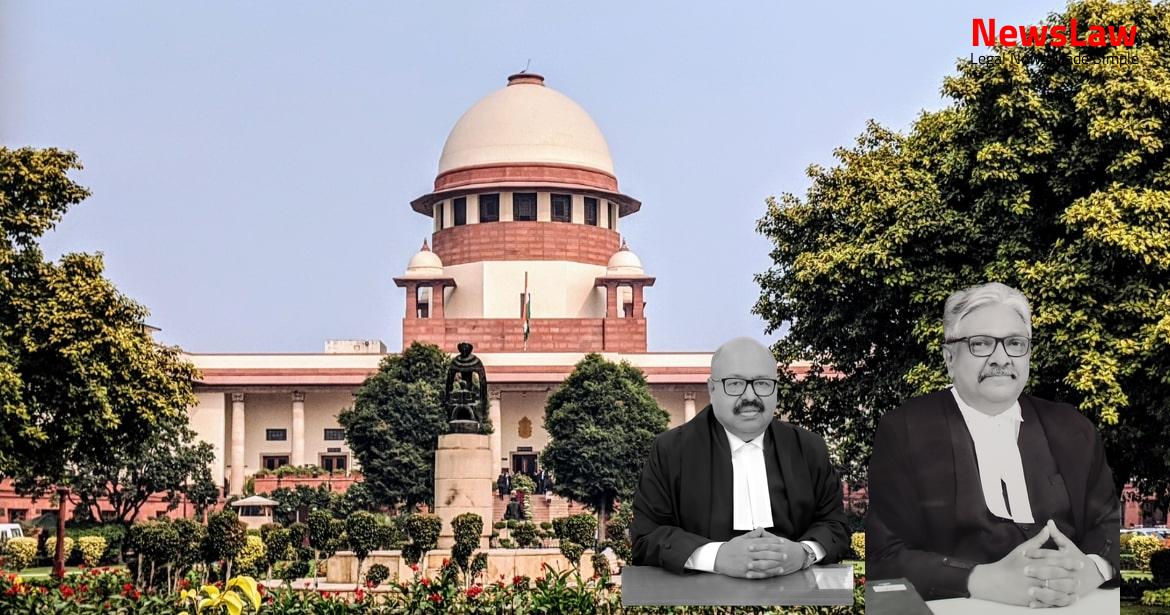Explore the detailed legal analysis conducted by the High Court in a complex property dispute case, focusing on the determination of possession and ownership rights. The case involves a thorough examination of various documents and legal provisions to ascertain the entitlement of the parties involved. Stay tuned to understand the nuances of the court’s interpretation and decision-making process in this intriguing legal battle.
Facts
- The respondent filed a suit for declaration of absolute ownership of the property and to declare a Gift Settlement Deed as null and void.
- The respondent also sought a permanent injunction against the petitioner from interfering with his possession.
- The High Court considered various documents like certificates, sale deeds, and police complaints to determine possession and entitlement.
- The respondent claimed possession through registered sale deeds and mutations in revenue records.
- The petitioner claimed possession through a Gift Settlement Deed and disputed subsequent sale transactions.
- The trial court initially dismissed the application for injunction based on the withdrawn suit of the respondent’s vendor and the petitioner’s possession documents.
- The High Court reversed the trial court’s decision, emphasizing the respondent’s evidence of ownership and possession.
- The High Court found discrepancies in the petitioner’s claim of possession over the disputed land.
- The High Court for the State of Telangana at Hyderabad allowed the appeal and granted an interim order of injunction in favor of the respondent.
- The Principal Senior Civil Judge observed that the photographs presented show the land as open land without any construction, similar to the respondent’s property.
- Easementary rights of air and light are considered as prescriptive rights.
- The appellant’s vendor needs to prove acquisition of these rights for the prescribed period.
Also Read: Analysis of Representative Complaints in Consumer Protection Cases
Arguments
- The respondent-plaintiff was considered as a purchaser pendente lite.
- The petitioner argued that the respondent cannot be rewarded with an interim injunction as his suit is barred by law.
- The court was not impressed with the petitioner’s submission.
Also Read: Undisclosed Conviction for Dharna Under Police Act Leads to Overturned Election
Analysis
- The High Court misread the order passed on 11.08.2015 in a previous case, I.A. No 510 of 2015 in O.S. No 603 of 2015.
- The dismissal of the application for injunction in the prior suit was due to the land being shown as open vacant land.
- The withdrawal of the prior suit by the vendor of the respondent-plaintiff influenced the decision for the present suit.
- The rights conferred by Section 38-E of the Tenancy Act were extensively considered during the analysis.
- The grant of ownership certificate under Section 38-E deemed protected tenants as owners, affecting the occupancy rights certificate.
- The claim of the respondent constructing a compound wall around the land contradicted the findings of the trial court.
- The High Court’s decision was based on the sub-division of the land and subsequent Pahanis in favor of the respondent-plaintiff’s predecessors-in-title.
- Based on these findings, the High Court granted an interim injunction in favor of the respondent-plaintiff.
- The title of the protected tenants is complete and ownership vests with them.
- The impugned order of the High Court does not warrant interference under Article 136 of the Constitution.
Also Read: Critical Analysis of Legal Principles in a High-Profile Criminal Case
Case Title: P SATYANARAYANA Vs. NANDYALA RAMA KRISHNA REDDY (2021 INSC 908)
Case Number: SLP(C) No.-011286 / 2021



